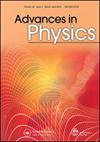快速旋转的原子气体
IF 13.8
1区 物理与天体物理
Q1 PHYSICS, CONDENSED MATTER
引用次数: 420
摘要
本文综述了快速旋转简并原子气体理论的研究进展。主要的焦点是单组分原子玻色气体的平衡特性,它(至少是静止的)形成了玻色-爱因斯坦凝聚体。旋转导致量子化漩涡的形成,这些漩涡排列成漩涡阵列,与超流氦的行为非常相似。在快速旋转的条件下,当涡旋密度变大时,原子玻色气体提供了在新的参数体系中探索量子化涡旋物理的可能性。首先,有一个有趣的现象,在这个现象中,漩涡变得足够密集,以至于它们的核心,正如愈合长度所设定的那样,开始重叠。在这种情况下,理论描述简化了,允许在最低朗道能级上还原到单粒子状态。其次,当涡旋的数量与气体中的粒子数量相当时,人们可以设想进入一个非常高涡旋密度的状态。在这种状态下,理论预测了一系列强相关相的出现,这些相可以被视为分数量子霍尔态的玻色子版本。在本文中,我们描述了快速旋转原子玻色气体在平均场和强相关状态下的平衡特性,以及晶格中玻色气体、多组分玻色气体和原子费米气体的相关理论发展。根据这些理论的发展,讨论了目前的实验情况和对未来的展望。本文章由计算机程序翻译,如有差异,请以英文原文为准。
Rapidly rotating atomic gases
In this article, we review developments in the theory of rapidly rotating degenerate atomic gases. The main focus is on the equilibrium properties of a single-component atomic Bose gas, which (at least at rest) forms a Bose–Einstein condensate. Rotation leads to the formation of quantized vortices which order into a vortex array, in close analogy with the behaviour of superfluid helium. Under conditions of rapid rotation, when the vortex density becomes large, atomic Bose gases offer the possibility to explore the physics of quantized vortices in novel parameter regimes. First, there is an interesting regime in which the vortices become sufficiently dense that their cores, as set by the healing length, start to overlap. In this regime, the theoretical description simplifies, allowing a reduction to single-particle states in the lowest Landau level. Second, one can envisage entering a regime of very high vortex density, when the number of vortices becomes comparable to the number of particles in the gas. In this regime, theory predicts the appearance of a series of strongly correlated phases, which can be viewed as bosonic versions of fractional quantum Hall states. In this article, we describe the equilibrium properties of rapidly rotating atomic Bose gases in both the mean-field and the strongly correlated regimes, and related theoretical developments for Bose gases in lattices, for multi-component Bose gases and for atomic Fermi gases. The current experimental situation and outlook for the future are discussed in light of these theoretical developments.
求助全文
通过发布文献求助,成功后即可免费获取论文全文。
去求助
来源期刊

Advances in Physics
物理-物理:凝聚态物理
CiteScore
67.60
自引率
0.00%
发文量
1
期刊介绍:
Advances in Physics publishes authoritative critical reviews by experts on topics of interest and importance to condensed matter physicists. It is intended for motivated readers with a basic knowledge of the journal’s field and aims to draw out the salient points of a reviewed subject from the perspective of the author. The journal''s scope includes condensed matter physics and statistical mechanics: broadly defined to include the overlap with quantum information, cold atoms, soft matter physics and biophysics. Readership: Physicists, materials scientists and physical chemists in universities, industry and research institutes.
 求助内容:
求助内容: 应助结果提醒方式:
应助结果提醒方式:


